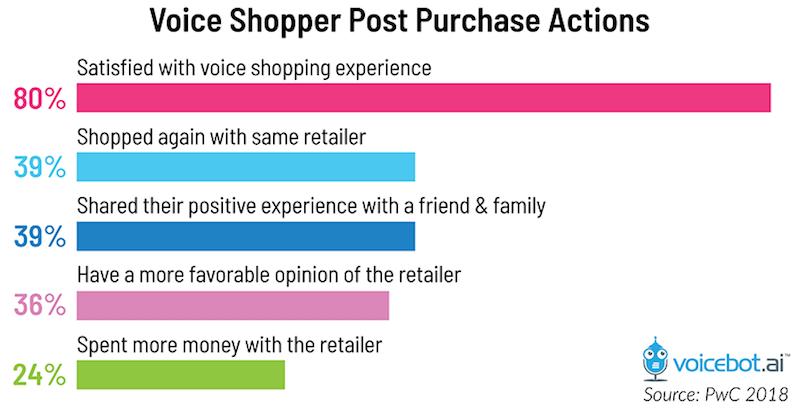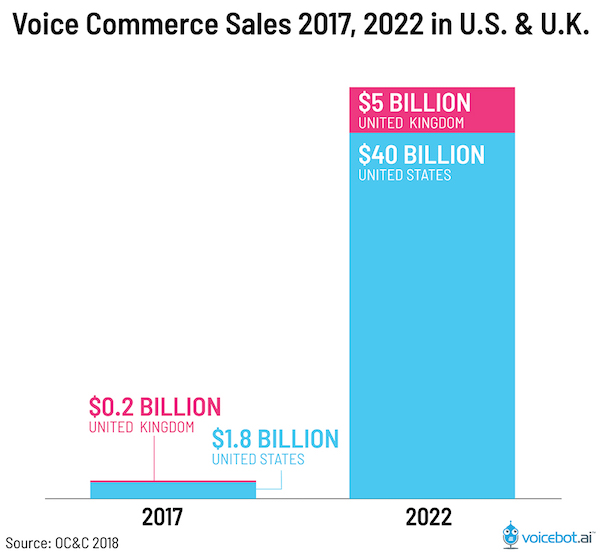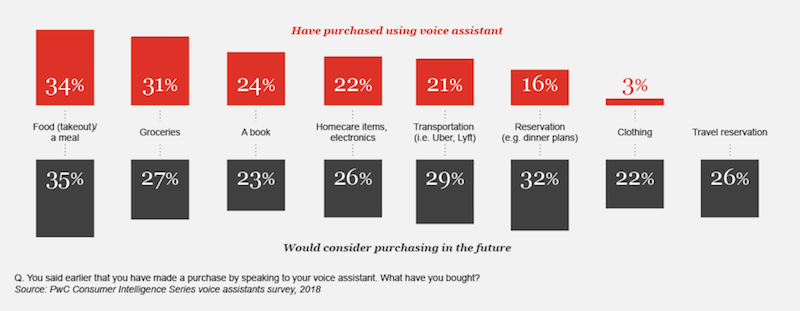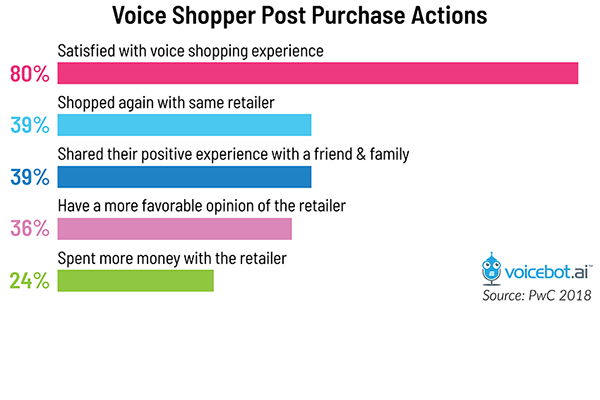Data Show Voice Shopping Delivers Customer Satisfaction, Positive Sentiment and Higher Spending
PwC’s report Prepare for the Voice Revolution contains a number of interesting findings. The data on voice shopping may top the list. PwC found in a U.S. consumer survey that 80% of consumers that had made a purchase using a voice assistant were satisfied with the experience. In addition, 39% shared their positive experience with friends and family, 36% came away from the experience with a more favorable opinion of the retailer and 24% spent more with the retailer.

These findings suggest voice shopping has a lot of upside for retailers and direct sellers. It also should raise confidence in voice commerce growth forecasts that predict voice shopping will rise twenty-fold in the U.S. over the next five years.

A Rising Preference for Voice Shopping?
The PwC study also found that voice shopping was preferred over traditional online and offline methods by a growing number of consumers. Thirty-six percent of U.S. survey participants said they prefer voice shopping over visiting a physical store while 35% favor voice over shopping through a mobile app and 24% over traditional online purchasing.

Source: PwC 2018
The most popular categories for voice shopping today are prepared food at 34%, groceries at 31% and books at 24%. Clothing was the least popular category coming in at only 3%. Despite the view that clothing is an “experience buy,” the lack of previous voice shopping use in the category may be due to limited options. Twenty-two percent of consumers in the survey said they would be interested in shopping for clothing using voice interaction in the future. There is high interest in travel reservations among 26% of respondents, but none reported having made this type of voice transaction to date. The transportation option that did register was on demand car service from companies such as Uber and Lyft which have been used by 21% of consumers with 29% considering it for a future purchase.

A Voicebot survey also found that 11.5% of U.S. consumers are using smart speakers to purchase items by voice each month. All of this data reinforce the premise that consumers are ready for voice shopping and many are using it today. It also shows that the economic engine behind voice assistant monetization will almost certainly be voice commerce.
Voice Shopping to Reach $40 Billion in U.S. and $5 Billion in UK by 2022
Cooking, Multitasking and Television Top the List of Voice Assistant Activity Pairings









